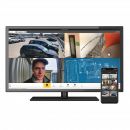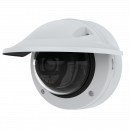
Real-world paramedic training powered by technology
The Northwest Region Prehospital Care Center (NWRPCP) employs Axis cameras, two-way speakers, and AXIS Camera Station Pro to document paramedic performance in simulation labs. Video review helps improve core competency testing and consistency across evaluators.
Training and licensing Ontario paramedics
In Ontario, Canada, the Ministry of Health oversees the certification and training of paramedics employed in the province. Under their umbrella, EMS (Emergency Medical Services) and regional hospitals work together to ensure paramedics provide pre-hospital patients with high-quality care. In Thunder Bay, Ontario, that collaboration takes place through the Northwest Regional Prehospital Care Program (NWRPCP) Education & Training Center. The host program – which is linked to Thunder Bay Regional Health Sciences Center – provides oversight, delegation, training and certification of 550 paramedics in the northwest region of Ontario.
“Once they graduate from an accredited program, we run those paramedics through a series of evaluations to acquire certification,” explains Paul Starkey, Operations Coordinator for NWRPCP. “In addition to initial certification, we provide continuing medical education to ensure they maintain their skillset and keep current with new procedures and medical directives.”
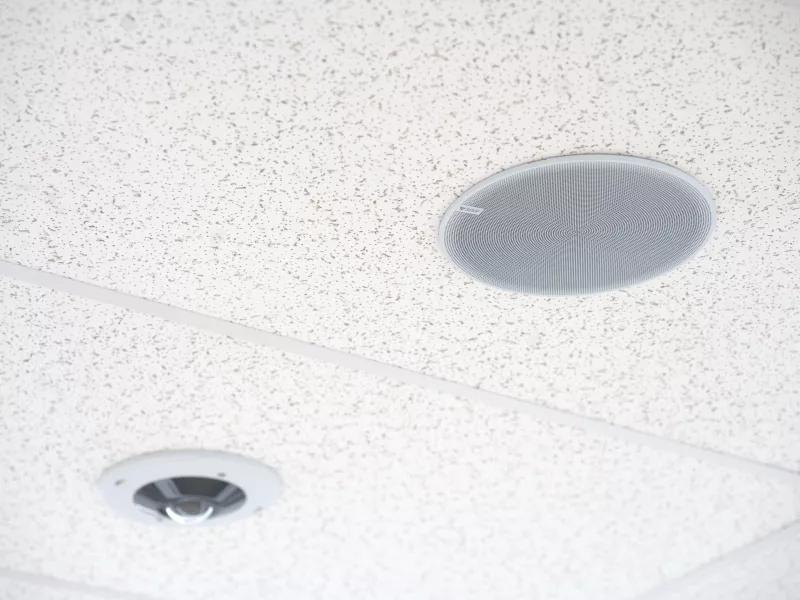
Simulating real-world emergencies
When NWRPCP moved into its new facility, a former physiotherapy office with multiple treatment rooms, it decided to introduce camera and audio technology into the evaluation process. “We run a seven-station clinical examination process, simulating various prehospital emergencies that paramedics might face,” shares Starkey. “These simulations range from patients in cardiac arrest to suffering fractures and lacerations, in respiratory and diabetic crisis, even late-stage labor.”
Other provincial partners had created evaluations labs that included video cameras to record performances. Starkey wanted to mirror that setup for NWRPCP. He reached out to TELECO, a technology solutions provider and Axis Solutions Gold partner, to design a solution.

“We corner-mounted two Axis wide-angle cameras in each examination room to eliminate any possible blind spots in the recordings,” says Richard Martin, project manager for TELECO. “We added Axis ceiling speakers with microphones so instructors, who watch exams through a glass wall, can communicate with the students or other clinicians watching in the command center.”
In the command center, two large monitors display live views of the cameras in each room, allowing clinical education staff to monitor all seven sessions simultaneously or enlarge the view of a specific camera for closer examination. The AXIS Camera Station Pro video management software provides the underlying software for the solution.

Ensuring evaluation consistency
“In our previous location, we’d just bump people out of their offices temporarily to create pop-up exam rooms,” explains Starkey. “We weren’t even recording these sessions. So QA (quality assurance) was really lagging.”
In their new technology-enhanced facility, NWRPCP clinical instructors can comment on examinations in real-time as well as review video and audio for quality assurance. “We not only monitor paramedic performance, we also look at the performance of our evaluators to make sure they’re consistently following our rating guidelines,” states Paul Starkey.
If the evaluator’s scoring of a student seems questionable, command center clinicians can instantly review it and talk to the evaluating instructor between simulations to make corrections. “In the past we could review the documents they submitted at the end, but we wouldn’t be able to double check if their scoring was accurate and appropriate,” recalls Starkey.
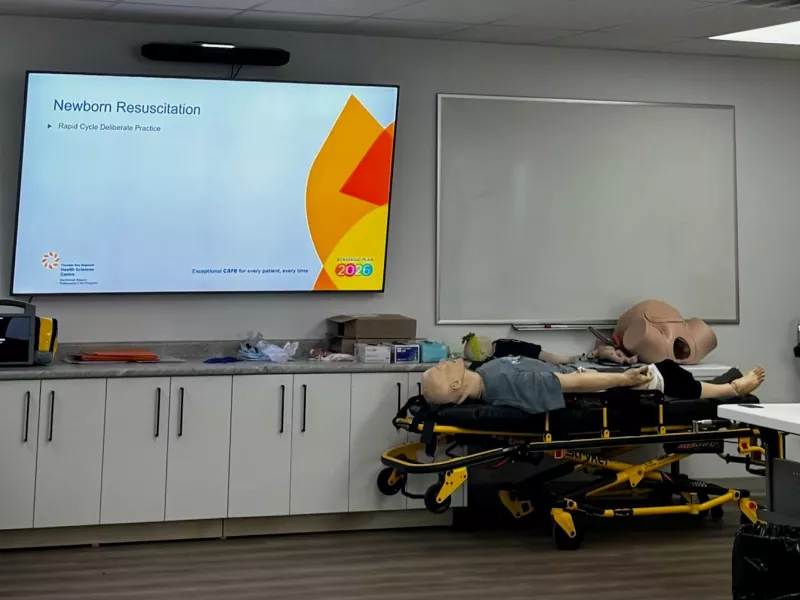
Taking simulations to the next level
To bring a little more realism to the simulation experience, NWRPCP projects images on exam room walls that create a sense of location – such as a street scene, a bedroom or living room, an ambulance interior, etc.
“We received a lot of positive feedback from veteran clinicians as well as the paramedics participating in exams,” declares Starkey. “They comment on how the setup seems very modern and professional.”
With the new technology in place, NWRPCP has been able to significantly increase its training and certification schedule. “Having the dedicated space and technology has allowed us to be more efficient,” states Starkey.
Before the move to new quarters, NWRPCP would run three or four training sessions per year. Now they’re able to run seven paramedic candidates through evaluation simultaneously, twice a day, up to four days in a row. Starkey says, “That means more trained paramedics to support the community compared to before the program.”
“The cameras and audio system have certainly made evaluations and quality assurance easier,” says Starkey. “The only upgrade we might consider is adding a Bluetooth connection to make communication even easier between exam room students and instructors.”
Having Axis technology in the simulation rooms and the command center helps us maintain consistent standards for paramedic certification and evaluator scoring. We can even flag and correct deviations in real time.
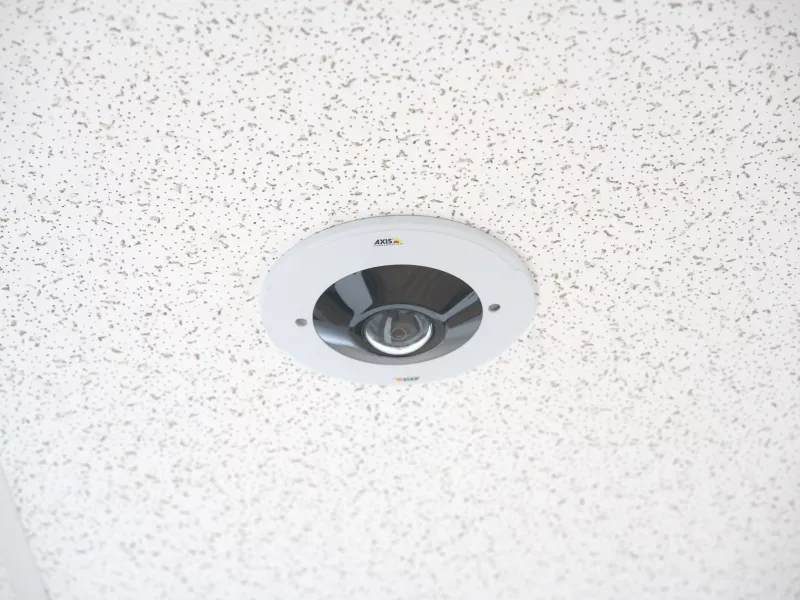
Extending simulation training to the broader community
In addition to paramedic certification, the NWRPCP Education & Training Centre also offers injury prevention education for the Thunder Bay community. “We work in conjunction with the Thunder Bay Regional Trauma Program to teach industrial workers, students from area schools, and people from other local agencies how to avoid injury,” explains Starkey. “We also facilitate Advanced Trauma Life Support courses for physicians.”
Depending on the specific content that the stakeholder is seeking to learn, NWRPCP staff conducts mini presentations in the different exam rooms. “Whether talking to school nurses or local agencies coming in for training, we’ve received nothing but positive feedback about our setup and programs,” reports Starkey.
Working with provincial partners to improve testing standards
NWRPCP is one of seven provincial-based hospitals charged with paramedic education and certification in Ontario. “We’re currently working with provincial partners to explore ways to better standardize our initial certification process.” shares Starkey. “Comparing video recordings among partners is a first step in building a training process that promotes better paramedic and evaluator performance.”
As an aside, Starkey hopes the collaboration will inspire any technology-lagging partners to modernize their facilities with new audio-video technology that can help them improve their testing process.
Products & solutions
Our partner organizations
Get in touch
Want to know how you can benefit from Axis solutions? Get in touch and we will help you.
Contact us